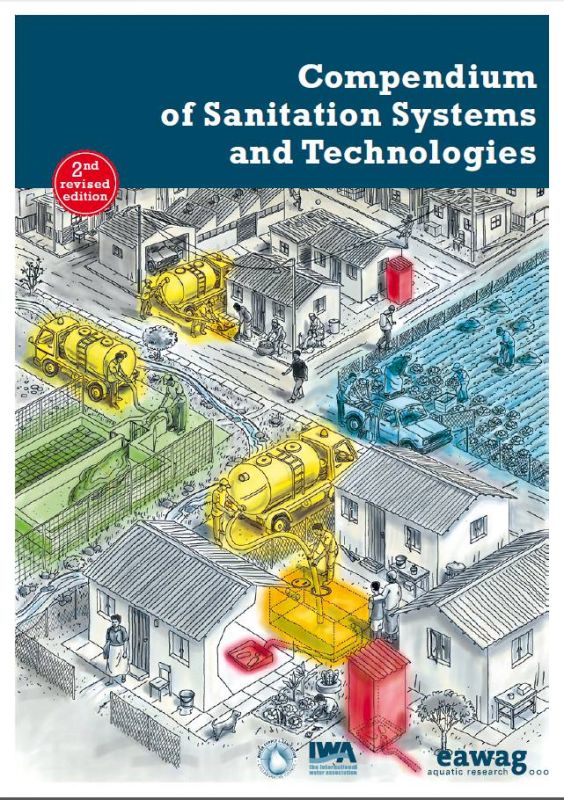Sanitation Systems and Technologies - Online Tool
Published on by Water Network Research, Official research team of The Water Network in Academic
The eCompendium is a digital planning tool for sanitation system design that allows interactive planning and technology choices in any given context, be it in small town settings or in dense urban informal settlements.
It can be used by engineers and planners to achieve better sanitation system design in workshops and planning meetings. It is also an interactive information repository that goes beyond the hard copy, providing, for instance, videos on such topics as how to build a latrine, and further literature on many subjects at your fingertips.
 Eawag/Sandec has produced an eCompendium version of its Second Edition of the Compendium of Sanitation Systems and Technologies.
Eawag/Sandec has produced an eCompendium version of its Second Edition of the Compendium of Sanitation Systems and Technologies.
It comprises the same content as the print version, plus additional links to references, further readings and cross-references to the Sustainable Sanitation and Water Management (SSWM) Toolbox.
The main added value of this online version is the possibility of using interactive links to highlight cross-references and to guide users through the entire sanitation chain.
All Technology Info Sheets are now stored in the SSWM Database. Previously uploaded factsheets and library entries can be directly accessed, providing cross-referenced further readings.
To help find suitable technologies, a filter can be applied
based on the desired input and output products of the technologies.
For example, if a technology for biogas production is searched, biogas can be selected as an output product and the filter will deliver all the biogas producing technologies, such as the biogas reactor.
What is the eCompendium ?
It is an interactive version of the Compendium of Sanitation Systems and Technologies , a compilation of appropriate sanitation technologies, plus a tool for combining technologies in a full system.
The eCompendium is the digital version of the Compendium of Sanitation Systems and Technologies. It comprises the same content as the new print version, providing additional links to references, further readings, videos and more at your fingertips.
The main added value of the online version is the possibility that the user can easily navigate between sanitation systems, technologies and the related terminology. Additionally, an interactive technology filter allows planners and sector experts to search for appropriate sanitation technologies based on inputs and outputs.
The eCompendium is linked to the SSWM Toolbox (www.sswm.info) and its comprehensive library of sector knowledge.
Possible uses of the eCompendium on-line tool are:
- System design discussions by engineers & planners
- Training events and workshops
- Classical teaching (e.g. environmental engineering)
- First-hand information source on sanitation systems and technologies for students and practitioners
The document's popularity is its brevity - ordering and structuring a huge range of information on tried and tested technologies in a single document. As in the first edition we present only proven technologies that are appropriate for low- and middle-income settings.
Also, we include only "improved" sanitation technologies, featuring safe, hygienic, and accessible sanitation. In this eCompendium edition we present the whole range of urban, peri-urban and rural technologies (e.g. from simple pits to conventional sewers).
You can order a hardcopy here.
The Compendium is also available in French, Spanish, Vietnamese and Nepalese – check the Eawag-Sandec page regularly for the publication of the Russian and Arabic editions!
Who is the target audience?
Engineers, planners, decision-makers, NGO staff and students concerned with sanitation in low and middle income countries.
What is the purpose?
A digital platform that offers easily accessible information and facilitates decision-making on sanitation systems and technologies
Media
Taxonomy
- Resource Management
- Sanitation
- Water & Sanitation
- Sanitation & Hygiene
- Water Resource Management
- Education
- Water Sanitation & Hygiene (WASH)